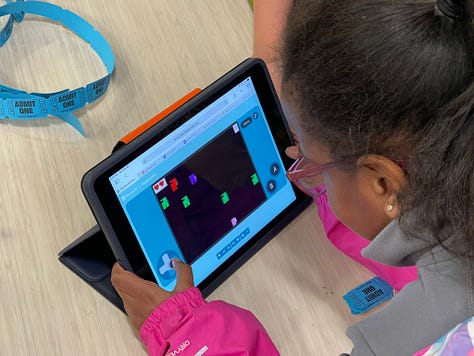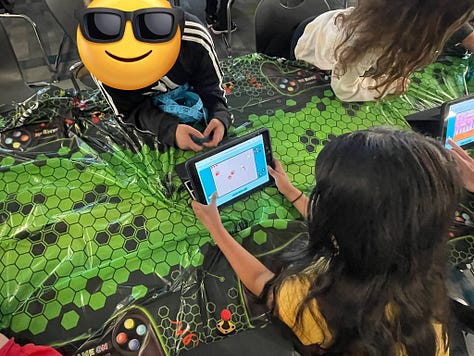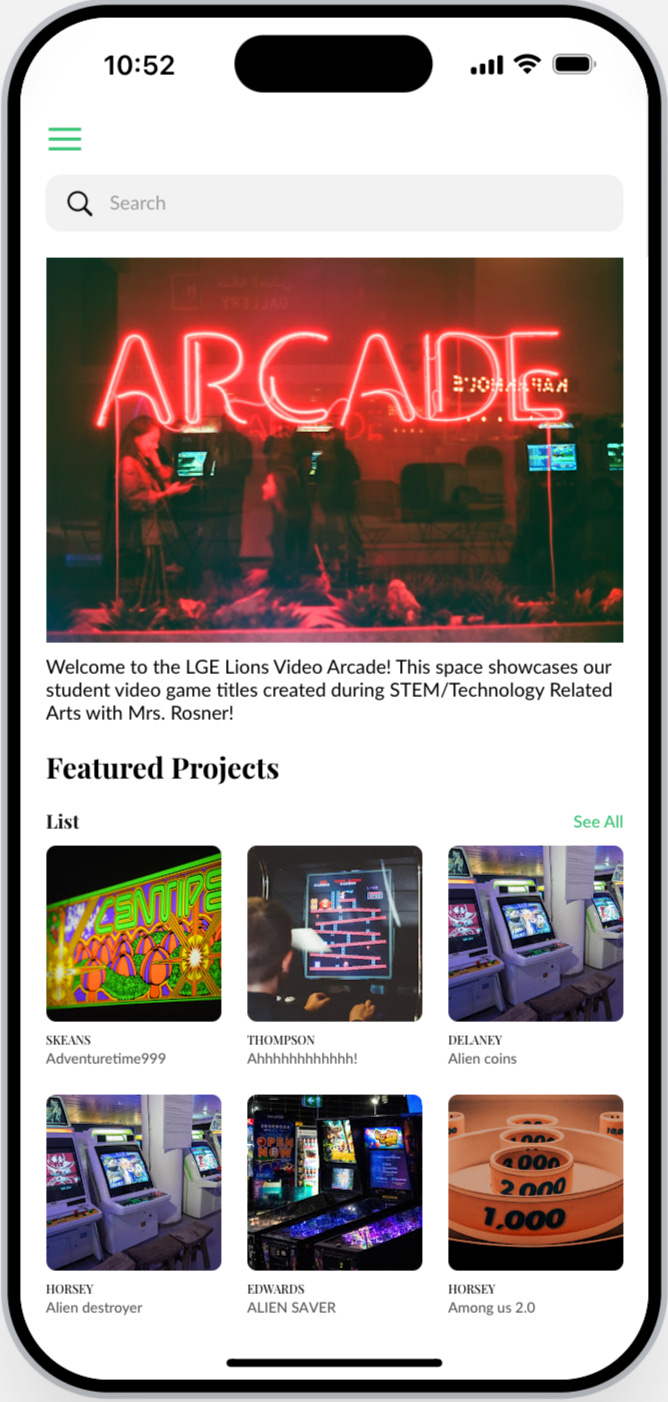Educational Technology and Student Creativity: The Lorewood Grove Elementary School Arcade Showcase Recap!
Educational technology has been reshaping the learning landscape, providing new and innovative ways to engage students and foster their creativity. One such example of this transformative power can be found at Lorewood Grove Elementary School (LGE) in Delaware, where Mrs. Moritz-Rosner designed an exciting video game design unit that sparked imagination and learning for her third, fourth, and fifth-grade students. In a previous article, we highlighted the design work around the applications developed to provide student gameplay feedback and another application designed to showcase all student-created games. We will take a deeper dive into the process of this project and highlight student outcomes.
At LGE, Mrs. Moritz-Rosner's STEM/Technology-related arts class introduced students to the exciting world of game design. Utilizing iPads and the MakeCode Arcade web-based game design program, students learned about gameplay features, character development, storylines, and creating music. Then, over several weeks, 311 students worked diligently on their projects, bringing their unique ideas to life. Research supports that STEM fields can promote creativity in elementary learners (Bers, 2018). In addition, engaging in hands-on, project-based activities encourages students to think critically and develop innovative solutions to their problems.
The culmination of the student's hard work was the "Arcade Showcase," an event where the young game designers hosted other school classes, parents, family members, and local community stakeholders. During this playtesting session, attendees provided valuable feedback on the games, which the students then used to modify and optimize their creations for an enhanced user experience.



The video game design unit at LGE is a prime example of how educational technology can be used to nurture creativity in students. Students could take ownership of their learning and uniquely express their ideas by providing them with the tools and guidance needed to design their games. Using iPads and MakeCode Arcade allowed for an accessible and engaging platform, ensuring that each student could participate fully in the creative process.
Not only did the game design unit foster creativity, but it also helped students develop critical real-world skills. By working on their games, students learned problem-solving, critical thinking, and collaboration as they navigated through the complexities of game design. In addition, the Arcade Showcase provided a unique opportunity for students to practice communication and presentation skills as they shared their games with others and gathered feedback for improvement.
Mrs. Moritz-Rosner's innovative approach to teaching game design highlights the potential of educational technology to inspire students and encourage creative thinking. As technology advances, educators must embrace new tools and methods that foster student creativity and prepare them for success in an ever-evolving world.
References:
Bers, M. U. (2018). Coding as a playground: Promoting positive learning experiences in childhood classrooms. Routledge. Research Article Link





